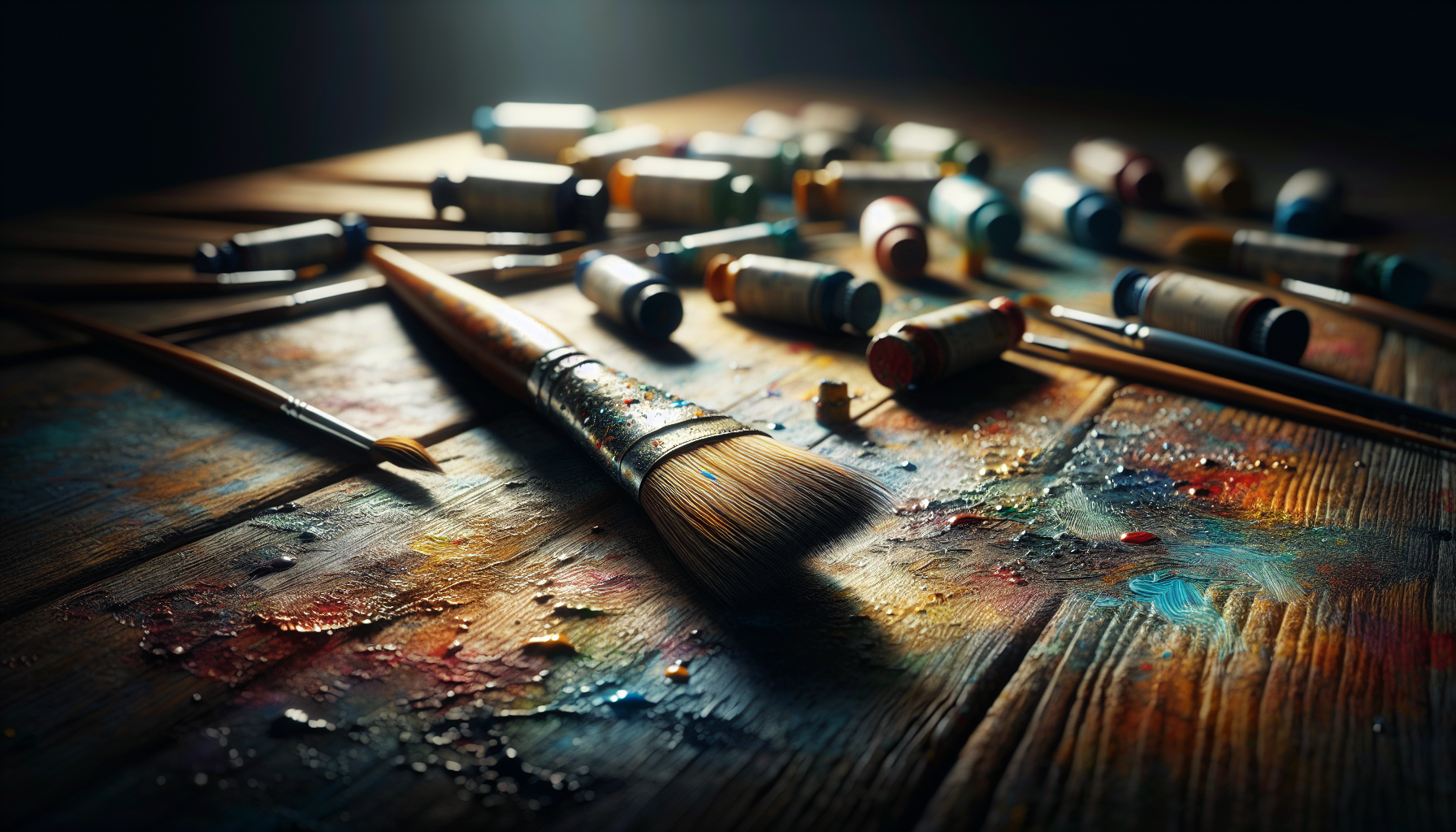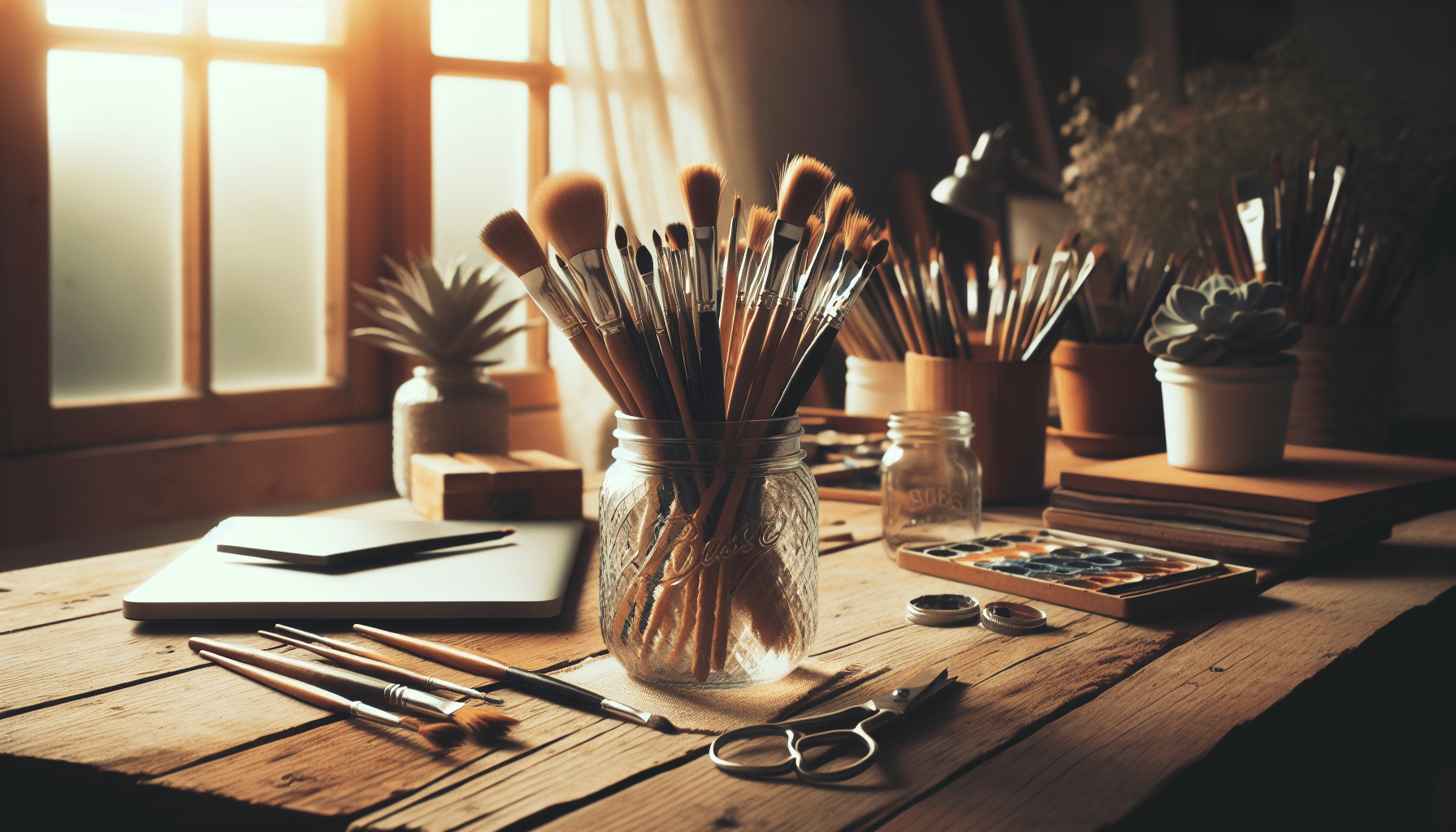Have you ever found yourself in the middle of a DIY painting project, struggling to achieve that smooth, professional finish? Whether you’re revamping your living space or tackling a small craft project, the right paint brushes can make all the difference. Without them, even the most vibrant paints can fall short of your expectations.

Understanding the Importance of the Right Tools
Choosing the correct paint brush is vital for any DIY enthusiast. Each brush is designed with specific purposes in mind, which means that picking the appropriate one can influence the quality and ease of your work. A quality brush not only affects the finish of your project but also impacts the overall painting experience. Investing time in understanding different brush types ensures you lay the groundwork for successful outcomes.
Why Quality Matters
When considering brushes for your projects, it’s essential to recognize that quality tools offer distinct advantages. High-grade brushes deliver better paint application, reduce streaks, and increase coverage efficiency. While they may require a higher initial investment, quality brushes last longer, ultimately saving you money and time.
Types of Paint Brushes
The world of paint brushes is vast, with each variety designed to cater to specific needs. Understanding their differences aids in aligning your selection with your project requirements. Here are five must-have paint brushes that should be in your toolkit for any DIY project.
1. Flat Brush
A flat brush is versatile and essential for applying paint over wide areas. It’s characterized by its square end and medium to long filaments, suitable for both water-based and oil-based paints. Flat brushes can create a smooth finish or produce a chiseled line with their sharp edges when required.
Best Uses
- Applying primers
- Large surface areas like walls or ceilings
- Varnishing or finishing coats
Advantages
- Excellent coverage
- Versatility in various painting techniques
2. Angular Brush
Angular brushes, often referred to as “cutters,” have bristles that are cut at an angle. This design makes them perfect for detailed work and reaching corners or for painting edges with precision. These brushes excel in tight spots where precision is crucial.
Best Uses
- Cutting in at corners
- Painting trims, such as baseboards and moldings
- Painting furniture edges
Advantages
- Precision in detailed and edgework
- Ability to reach hard-to-access areas
3. Round Brush
Round brushes are recognized for their rounded or pointed tips and are more commonly used for artistic applications. However, they’re quite effective for DIY projects requiring fine detail or intricate designs. The round shape allows for smoother lines and detail-oriented work.
Best Uses
- Detail work on murals or decorative pieces
- Areas requiring curved or soft brush strokes
- Craft projects requiring precision
Advantages
- Allows for intricate detailing
- Flexibility in stroke volume and width
4. Fan Brush
Fan brushes have bristles that spread out like a fan, and while more often used in artistic paintings, they hold a place in detailed DIY projects. The fan brush is effective for blending colors, feathering, and creating special textures or effects.
Best Uses
- Feathering textured surfaces
- Blending paints seamlessly
- Creating unique patterns or decorative effects
Advantages
- Achieves seamless blending
- Offers creative versatility
5. Filbert Brush
The filbert brush, combining the functionality of flat and round brushes, features a rounded tip. These brushes are useful in DIY projects that require a combination of sharp edges and softer lines, such as artistic strokes on walls or unique designs.
Best Uses
- Mural work with soft transitions
- Smooth blending of colors
- Semi-sharp strokes
Advantages
- Combines detail work with coverage ability
- Creates soft or hard edges as needed
Choosing the Right Brush for Your Paint Type
The type of paint you’re using significantly impacts the brush selection. Different paints have different consistencies and formulations, necessitating brushes that can handle their unique characteristics.
Water-Based Paints
For water-based paints, synthetic brushes are often recommended. Synthetic fibers do not absorb water, thus maintaining their shape and providing a smoother application. They’re also easier to clean, making them an ideal choice for latex paints often used in homes.
Oil-Based Paints
Natural bristle brushes are the standard for oil-based paints. The natural fibers hold up against the harsh solvents found in these paints, offering a superior finish. However, they require more meticulous care in cleaning and upkeep.
Maintaining Your Paint Brushes
Proper brush care extends their life and maintains their performance. After each use, carefully clean your brushes to prevent paint from hardening in the bristles.
Cleaning Techniques
For water-based paints, warm soapy water effectively removes residue. For oil-based paints, mineral spirits or specialized brush cleaners are necessary to dissolve the oils. Ensure that brushes are completely dry before storage to prevent damage to the bristles.
Storage Tips
Proper storage prevents damage and prolongs brush life. Store brushes hanging upside down or flat to retain their shape, avoiding pressure on the bristles that can cause warping.

Tips for Pro-Level DIY Painting
Emulating a professional look in your DIY projects is achievable with the right practices. Here are some tips to consider:
Consistent Paint Application
Ensure even application by avoiding overloading your brush with paint. Dip only one-third of the brush into paint and tap off excess to prevent drips and splatter.
Brush Stroke Techniques
Experiment with different stroke techniques suited to your project. Long, smooth strokes work well for even coverage, while shorter, detailed strokes will aid in precision work.
The Role of Primers and Finishes
Using primers prepares surfaces, reducing the overall paint needed and enhancing durability. Additionally, a finishing coat provides protection and can alter the sheen to bring out the best in your project.
Conclusion
Choosing the right paint brushes for your home DIY projects is more than just a routine checklist item; it’s a strategic step in ensuring high-quality finishes and efficient work. With the right tools at your disposal, the possibilities are endless. Whether you’re an experienced DIY enthusiast or a beginner, equipping yourself with these must-have brushes will elevate your projects from basic to professional. As you refine your skills and expand your toolbox, remember that success often lies in the details, and the right brush can be your best ally on this journey.



